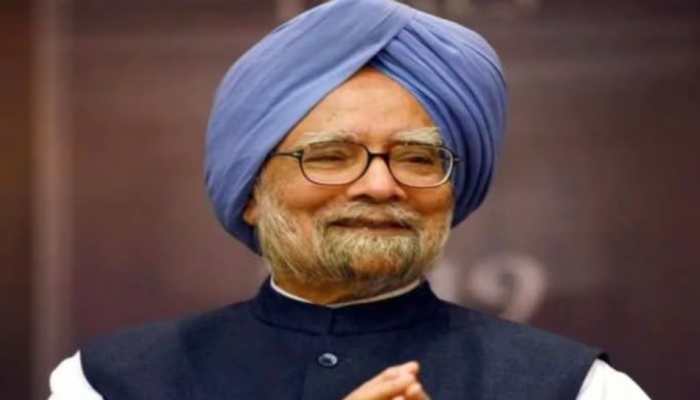Exclusive - Challenges faced by Electric Vehicles to become the next big thing in India
The estimation of growth in Electric Vehicles is accompanied by specific challenges related to inadequate supply chains, certain government policies, consumer behaviour, infrastructure, etc.
- Electric Vehicles are on a boom globally
- Indian market facing challenges in accepting EVs
- Infrastructure, High initial cost proving a roadblock
Trending Photos
) Image for representation
Image for representation As per recent industry reports published, India’s electric vehicle market (EV) is estimated to emerge as a $7.09 billion opportunity by 2025. Furthermore, the Indian government is also formulating new measures to achieve 100% electric vehicle mobility by 2030. In fact, the Indian EV market is anticipated to witness a robust CAGR growth of 42.38%. Such positive developments in the Indian EV industry make for a vast pool of opportunities for foreign investors who are willing to expand their businesses in the country.
However, the estimation of growth is also accompanied by concerns about specific challenges related to inadequate supply chains, certain government policies, consumer behaviour, infrastructure, etc. These hurdles must be duly considered by foreign investors in order to formulate an adequate India market entry strategy. Foreign players will be wise to seek assistance from India entry strategy consulting firms to achieve these desired results.
Also read: India heading towards electric mobility from internal combustion engine
Charging Infrastructure
Consumers and fleets considering all-electric vehicles need access to charging stations, also known as EVSE (electric vehicle supply equipment). For most drivers, this starts with charging at home or at fleet facilities. However, it can be challenging as every one may not have access to an EVSE. Charging stations at workplaces and public destinations may help bolster market acceptance.
Challenges
End-User Challenges:
Range Anxiety: For an EV user, range anxiety refers to the concern about the number of kilometres an EV will run i.e. how long the battery power will last. Many EV users like to travel long distances on a single charge, which is not feasible with the current battery technology installed in electric vehicles.
Time Anxiety: Customers are keen to charge their EVs as quickly as possible; this too isn’t feasible with the current charging technologies that are available in the market.
Charge Anxiety: Charge anxiety is about whether or not the EV user will find a charging station in the first place. This is followed by the issue of trust.
CPOs
Sub-optimal Utilisation Rates: The utilisation rate is at 10-15% at public charging stations, considering a fast-charging station charges a car in ~1.5. We do not see more than 2-3 cars coming in for charging on any given day. This is clearly inadequate given the huge capital that has been invested in installing the station. This high cost associated with the equipment and its installation is a major challenge and barrier to expanding charging infrastructure. The utilisation rate also remains low because of low EV numbers on road. In addition, FAME II requires at least 2 chargers of ~100kW each on every PCS. This may work in a state like Delhi where this much power consumption can still fall under the low tension (LT) connection. However, it may be more challenging in other states.
Private Fleet Operators
Obtaining a reliable electric connection for a fleet-owned and operated EVSE still remains a concern.
Impact of COVID-19: Several EV charging station deployments and tenders were delayed due to the pandemic-induced lockdown. From an industry veteran’s perspective, this will likely result in a 10- 15% deficit in the EV charging space this year. Besides, delays in the supply of power modules and other sub-components from abroad have also intensified due to COVID related supply chain disruptions.
With strong government thrust for EV transition and its supporting infrastructure, the key stakeholders have been encouraged to drive market growth through regulatory mechanisms and industry initiatives. EV policy incentives of various states in conjunction with central initiatives such as low GST rates and FAME schemes has enabled private players to operate efficiently.
These companies are, however, facing challenges in terms of paying fixed capacity charges based on connection capacity (kVA or kW). The infrastructure set up by these players is severely under-utilized because of fewer numbers of EVs in use. Given the low volume, there should be minimum/no capacity (fixed monthly) charges on EV tariffs in the initial 3 to 5 years for CPOs. In addition, the government needs to plan for increasing the number of EVs on the road by buying a greater number of EVs than what it is already doing through EESL for different government departments. This will help strike a balance of optimum investment and maximum returns between the service providers and the service in the long run.
Also read: DTC to deploy 1,500 electric buses in Delhi under CESL 'Grand Challenge'
Lack of Trained Personnel
In addition to the problem of inefficient infrastructure, the lack of skilled personnel in the electric vehicle markets is a significant challenge that foreign investors must deal with. The EV industry in India is still in its nascent stage, and almost every automobile organization will face a challenge in areas of EV talent acquisition and development.
This makes it imperative for foreign firms expanding in India to avail assistance from a reliable India entry strategy consulting firm that can offer a comprehensive human resource development and talent acquisition strategy to scout for adequate experts on designs, product, infrastructure and manage pay packages.
Uncertain Consumer Behavior
Uncertain consumer behaviour associated with the higher costs of EVs and the issues about inadequate charging infrastructure is major impediments to growth in this sector. The average starting price of an electric car in India is approximately USD 18000 (INR 13 lacs), whereas the average starting price of a regular fuel-powered vehicle is approximately USD 6000 (INR 4.5 lacs). This nearly 3X price is a severe market entry barrier and requires an adequate India market entry strategy that will help to identify the right consumer segment and their needs and preferences to achieve a sustainable profit in a short span.
Supply-chain Problems
EV battery manufacturing in India is still largely dependent on imports due to the lack of Lithium, and this poses a major hurdle for companies willing to invest in India’s EV industry. Companies in India are trying to prospect for stakes in overseas resources and are transferring more raw material production chains to India; there is very little synergy as the battery manufacturing capacity still demands adequate planning.
This has also created the need for joint ventures to acquire adequate lithium-ion battery resources. Foreign organizations, therefore, are increasingly turning to consulting firms to help them to assess technology and market trends and offer comprehensive business opportunities in India to achieve profitable long-term growth.
Impact of FAME II Policy
In the year 2019, the Indian government approved the FAME II scheme, by which the government has proposed to invest about USD 1.4 billion to incentivize the production of electric vehicles in the country. However, FAME II policy also requires 50% localization in vehicle production is required to avail of the incentive. This is a significant India market entry strategy barrier for most organizations as the Indian component suppliers are not yet ready to manufacture components in the face of the present low value of electric vehicles in the market. Therefore, most firms will not be able to enjoy the benefits of the FAME II incentive, which consequently impacts the growth of business opportunities.
Lack of service options
Most of us at some point in time would have faced a vehicle breakdown. And thanks to the large availability of skilled/unskilled auto service technicians, the problem is usually taken care of. However, with EVs, this system becomes redundant as there is a need for retraining repair professionals or finding newly trained workers. Yes, an EV has lesser moving parts when compared to an ICE vehicle, but the technology is something our informal service network has no knowledge of. Hence, this adds to the anxieties of EV owners/drivers who are constantly worried about getting stranded in the middle of nowhere without access to help. Even though most Auto OEMs have extensive service and dealer networks across India, their EV Service network is yet to reach a substantial level.
With any new system, there will always be challenges. The EV industry is still in its nascent stage in India, but it developing at a rapid pace. And catching up to speed are the infrastructure requirements to support the EV demand. Even with the current challenges, electric vehicles present huge potential to reduce our carbon footprint and provide a cost-effective system of transportation. And the one way to contribute towards this growth is to buy an electric vehicle.
This article is authored by Mehul Shah, VP Transportation BU, Nexcharge. All views are personal.
Stay informed on all the latest news, real-time breaking news updates, and follow all the important headlines in india news and world News on Zee News.
Live Tv







)
)
)
)
)
)
)
)
)
)
